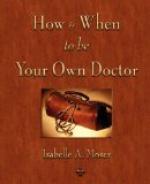A few years later I married an American and became the Mental Health Coordinator for Whatcom County, the northwestern corner of Washington State. I handled all the legal proceedings in the county for mentally ill people. After treatment in the state mental hospital I supervised their reentry into the community, and attempted to provide some follow up. This work further confirmed my conclusions that in most cases the mentally ill weren’t helped by conventional treatment. Most of them rapidly became social problems after discharge. It seemed the mental hospital’s only ethically defensible function was incarceration—providing temporary relief for the family and community from the mentally ill person’s destructiveness.
I did see a few people recover in the mental health system. Inevitably these were young, and had not yet become institutionalized, a term describing someone who comes to like being in the hospital because confinement feels safe. Hospitalization can mean three square meals and a bed. It frequently means an opportunity to have a sex life (many female inmates are highly promiscuous). Many psychotics are also criminal; the hospital seems far better to them than jail. Many chronically mentally ill are also experts at manipulating the system. When homeless, they deliberately get hospitalized for some outrageous deed just before winter. They then “recover” when the fine weather of spring returns.
After a year as Mental Health Co-ordinator, I had enough of the “system” and decided that it was as good a time as any to return to school for a Ph.D., this time at University. of Oregon where I studied clinical and counseling psychology and gerontology. While in graduate school I became pregnant and had my first child. Not surprisingly, this experience profoundly changed my consciousness. I realized that it had perhaps been all right for me to be somewhat irresponsible about my own nutrition and health, but that it was not okay to inflict poor nutrition on my unborn child. At that time I was addicted to salty, deep-fat fried corn chips and a diet pop. I thought I had to have these so-called foods every day. I tended to eat for taste, in other words, what I liked, not necessarily what would give me the best nutrition. I was also eating a lot of what most people would consider healthy food: meat, cheese, milk, whole grains, nuts, vegetables, and fruits.
My constitution had seemed strong and vital enough through my twenties to allow this level of dietary irresponsibility. During my early 20s I had even recovered from a breast cancer by sheer will power. (I will discuss this later.) So before my pregnancy I had not questioned my eating habits.
As my body changed and adapted itself to it’s new purpose I began visiting the libraries and voraciously read everything obtainable under the topic of nutrition—all the texts, current magazines, nutritional journals, and health newsletters. My childhood habit of self-directed study paid off. I discovered alternative health magazines like Let’s Live, Prevention, Organic Gardening, and Best Ways, and promptly obtained every back issue since they were first published. Along the way I ran into articles by Linus Pauling on vitamin C, and sent away for all of his books, one of these was co-authored with David Hawkins, called The Orthomolecular Approach to Mental Disorders.




